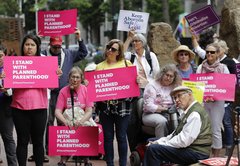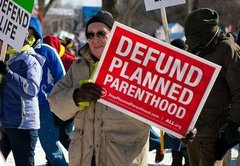Defund Planned Parenthood
Donald Trump
"I would defund it because of the abortion factor, which they say is 3 percent. I don't know what percentage it is. They say it's 3 percent. But I would defund it, because I'm pro-life."
Trump-O-Meter

Promise Kept



